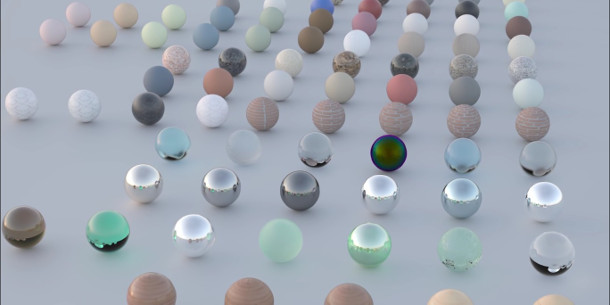Nvidia ships Iray for 3ds Max and Maya 2016
Nvidia has shipped Iray for 3ds Max and Maya 2016, the new plugin versions of its GPU-accelerated renderer, adding the option to share physically based materials between platforms in the firm’s Material Definition Language.
Both plugins are developed by third-party firms: [0x1], in the case of Iray for Maya 2016, formerly known as IrayForMaya; while Iray for 3ds Max 2016 makes use of Lightworks’ Iray+ technology.
Share physically based materials between host software in MDL format
The major change this time round is support for Nvidia’s Material Definition Language (MDL), intended to provide a standard format in which materials can be shared.
The system is intended to deliver “extremely similar results” when displaying materials in any of Iray’s render modes, from OpenGL preview to final-quality output; and when displaying materials in different renderers.
That not only includes Iray running in different host applications but also mental ray 3.13 and V-Ray.
According to Nvidia: “Unlike a shading language … MDL materials define the behavior of light at a high level. Different renderers and tools interpret the light behavior and create the best possible image.”
MDL materials can be authored using the native tools of the host software: in Maya’s case, supporting UV-based textures and the application’s shading networks.
MDL was also introduced in the versions of Iray and mental ray integrated into 3ds Max 2016 earlier this year.
Free vMaterials library of real-world materials
The plugins also come with the new vMaterials library: a collection of “hundreds” of MDL assets representing common-real world materials and lights.
Assets from the library can be edited or layered – the system supports up to 16 layers per material – to create custom materials without the need to write shader code.
Other new features in Iray for Maya 2016
In addition, Iray for Maya 2016 adds a range of other features, including display support for Iray’s physical sun and sky and image-based lighting within Maya’s Viewport 2.0.
There is also now support for global and per-object instancing in Iray’s Photoreal render mode; and the Shadow Terminator Offset feature removes shadow borderline artefacts.
You can find a full list of new features via the link at the foot of the story.
Pricing and availability
Both Iray for Maya 2016 and Iray for 3ds Max 2016 are available through Nvidia’s online store as node-locked or floating licences. Both are available as rental-only at an “introductory price” of $295 per licence per year.
The vMaterials library is a free download from Nvidia’s website.
Read a list of features in Iray for 3ds Max 2016 on Nvidia’s website
Read a list of features in Iray for Maya 2016 on Nvidia’s website
Read a full list of new features in Iray for Maya 2016 on [0x1]’s website

